 W
WThe 2nd Lancers is one of the oldest and a highly decorated armoured regiment of the Indian Army. The regiment was formed by the amalgamation of two of the oldest regiments of the Bengal Army – the 2nd Royal Lancers and the 4th Cavalry.
 W
WThe 4th Cavalry was a cavalry regiment of the British Indian Army.
 W
WThe 6th Lancers is an armoured regiment of the Pakistan Army. Previously, it was known as the 6th Duke of Connaught's Own Lancers , and was a regular cavalry regiment in the British Indian Army. It was formed in 1921 by amalgamation of the 13th Duke of Connaught's Lancers and the 16th Cavalry. The regiment and its predecessors have seen active service on the North West Frontier, in Egypt during 1882, in China during the Boxer Rebellion, the two World Wars and the Indo-Pakistani War of 1965. On the Partition of India in 1947, the regiment was allotted to the Pakistan Army, where it remains in service today.
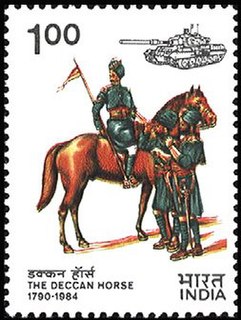 W
WThe Deccan Horse or 9 Horse is one of the oldest and most decorated armoured regiments of the Indian Army. The The Royal Deccan Horse , which was a regular cavalry regiment of the British Indian Army was formed from the amalgamation of two regiments after World War I. They saw service from the Mutiny of 1857 up to and including World War II.
 W
WThe 11th Cavalry , is an armoured regiment of the Pakistan Army. It was previously known as the 11th Prince Albert Victor's Own Cavalry and was a regular cavalry regiment of the old British Indian Army. It was formed in 1921 by the amalgamation of the 21st Prince Albert Victor’s Own Cavalry and the 23rd Cavalry.
 W
WThe 11 Gorkha Rifles is a Gorkha regiment of the Indian Army that was re-raised after independence. The regiment consists of primarily the Kirati Tribes Rai and Limbu of Eastern Nepal, Darjeeling ,Kalimpong, Dooars of West Bengal, Sikkim and other parts of Northeast India Though it is considered to be the youngest of the Gorkha regiments its lineage is as long as those of the 7th Gurkha Rifles and 10th Gurkha Rifles.
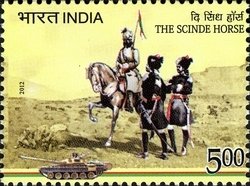 W
WThe 14 Horse is an armoured regiment in the Armoured Corps of the Indian Army. The regiment, known before independence as the 14th Prince of Wales's Own Scinde Horse was a regular cavalry regiment of the Bombay Army, and later the British Indian Army.
 W
WThe 16th Light Cavalry is a regiment of the Armoured Corps, a primary combat arm of the Indian Army. Prior to India gaining independence from the British in 1947, it was a regular cavalry regiment of the British Indian Army. It was formed in 1776 and is the oldest armoured regiment raised in India. The 16th Light Cavalry saw service in a number of conflicts ranging from the Second Anglo-Mysore War in 1781 to World War II. It has a number of battle honours including "Punjab 1965" earned during the Indo-Pakistani War of 1965.
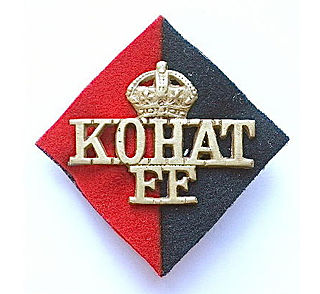 W
WThe 21st Kohat Mountain Battery was an artillery unit of the British Indian Army. It was raised in 1851 as the No. 2 Horse or Punjab Light Field Battery, Punjab Irregular Force. It became the 21st Kohat Mountain Battery in 1903. In 1947, it was transferred to the Pakistan Army, where it exists as the 2nd Royal Kohat Battery of The First (SP) Medium Regiment Artillery.
 W
WThe 24th Hazara Mountain Battery was an artillery battery of the British Indian Army.
 W
WThe 24th Punjabis were an infantry regiment of the British Indian Army. It was raised in 1857, as the 11th Regiment of Punjab Infantry. It was designated as the 24th Punjabis in 1861 and became 4th Battalion 14th Punjab Regiment in 1922. In 1947, it was allocated to the Pakistan Army, where it continues to exist as 8th Battalion The Punjab Regiment.
 W
WThe 30th Punjabis were an infantry regiment of the British Indian Army. It was raised in 1857, as the 22nd Regiment of Punjab Infantry. It was designated as the 30th Punjabis in 1903 and became 1st Battalion 16th Punjab Regiment in 1922. In 1947, it was allocated to the Pakistan Army, where it continues to exist as 13th Battalion The Punjab Regiment.
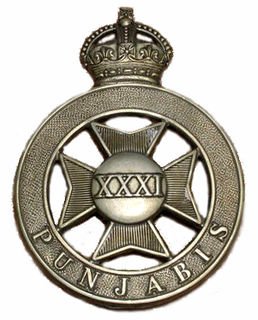 W
WThe 31st Punjabis was an infantry regiment of the British Indian Army. It was raised in 1857, as Van Cortlandt's Levy. The regiment was designated as the 31st Punjabis in 1903 and became 2nd Battalion 16th Punjab Regiment in 1922. In 1947, it was allocated to the Pakistan Army, where it continues to exist as 14th Battalion The Punjab Regiment.
 W
WThe 33rd Punjabis was an infantry regiment of the British Indian Army. It was raised in 1857, as the Allahabad Levy. It was designated as the 33rd Punjabis in 1903 and became 3rd Battalion 16th Punjab Regiment in 1922. In 1947, it was allocated to the Pakistan Army, where it continues to exist as 15th Battalion The Punjab Regiment.
 W
WThe 84th Punjabis was an infantry regiment of the British Indian Army. It was raised by Captain Donald Macdonald at Vellore on 12 August 1794, as the 34th Battalion of Madras Native Infantry. It was designated as the 84th Punjabis in 1903 and became the 10th (Training) Battalion, 1st Punjab Regiment in 1922. In 1943, it was converted into the 1st Punjab Regimental Centre. In 1947, the 1st Punjab Regiment was allocated to the Pakistan Army. In 1956, the 1st, 14th, 15th and 16th Punjab Regimental Centres where amalgamated to form the Punjab Regimental Centre.
 W
WThe 89th Punjabis was an infantry regiment of the British Indian Army raised in 1798 as a battalion of Madras Native Infantry. It was designated as the 89th Punjabis in 1903 and became 1st Battalion 8th Punjab Regiment in 1922. In 1947, it was allocated to Pakistan Army, where it continues to exist as 1st Battalion, The Baloch Regiment.
 W
WThe 90th Punjabis were an infantry regiment of the British Indian Army. The regiment was raised in 1799 as a battalion of Madras Native Infantry. It was designated as the 90th Punjabis in 1903 and became 2nd Battalion 8th Punjab Regiment in 1922. In 1947, it was allocated to Pakistan Army, where it continues to exist as 2nd Battalion of The Baloch Regiment.
 W
WThe 91st Punjabis was an infantry regiment of the British Indian Army. The regiment was raised in 1800 as a battalion of Madras Native Infantry. It was designated as the 91st Punjabis in 1903 and became 3rd Battalion 8th Punjab Regiment in 1922. In 1947, it was allocated to Pakistan Army, where it continues to exist as 3rd Battalion of The Baloch Regiment.
 W
WThe 92nd Punjabis were an infantry regiment of the British Indian Army. The regiment was raised in 1800 as a battalion of Madras Native Infantry. It was designated as the 92nd Punjabis in 1903 and became 4th Battalion 8th Punjab Regiment in 1922. In 1947, it was allocated to Pakistan Army, where it continues to exist as 4th Battalion of The Baloch Regiment.
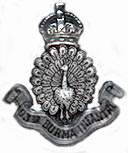 W
WThe 93rd Burma Infantry was an infantry regiment of the British Indian Army. The regiment was raised in 1800 as a battalion of Madras Native Infantry. It was designated as the 93rd Burma Infantry in 1903 and became the 5th (Burma) Battalion 8th Punjab Regiment in 1922. In 1947, it was allocated to the Pakistan Army, where it continues to exist as 5th Battalion of The Baloch Regiment.
 W
WThe Assam Rifles is the oldest paramilitary force and belongs to the Assam regiment of Indian Army, dating back to 1835 under the British Raj, raised under the name Cachar Levy. The present name of "Assam Rifles" has been used since 1917. Over the course of its history, the Assam Rifles have served in a number of roles, conflicts and theatres including World War I, where they served in Europe and the Middle East, and World War II, where they served mainly in Burma. After the Chinese annexation of Tibet, the Assam Rifles were tasked with manning the Tibet border of Assam Himalayan region. They were also instrumental in maintaining law and order in the tribal Arunachal Pradesh.
 W
WThe Bengal Engineer Group (BEG) is a military engineering regiment in the Corps of Engineers of the Indian Army. The unit was originally part of the Bengal Army of the East India Company's Bengal Presidency, and subsequently part of the British Indian Army during the British Raj. The Bengal Sappers are stationed at Roorkee Cantonment in Roorkee, Uttarakhand.
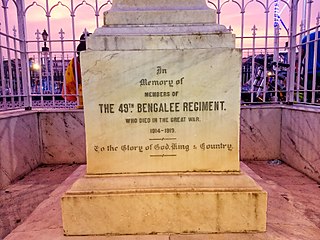 W
WBangali Platoon or Bengalee Regiment was a regiment of Bengali soldiers raised during the First World War with Lt. S. G. Taylor as a Regiment Commander. At the beginning of the First World War (1914-1918). So that time many non-combatant soldiers and skilled and unskilled laborers were also recruited from Bengal. In middle 1916, the British Government decided to create a regiment of Bengali soldiers. At first, it was called Bengali Double Company. These Double Companies, each consisting of 228 soldiers, are thought to annex with Indian Army as a regiment. The Bengali Double Company raised the first Bengali Battalion on 26 June 1917. It was named the 49th Bengalee regiment or briefly the 49th Bengalee. It was disbanded in 1920.
 W
WThe Central India Horse was a regular cavalry regiment of the British Indian Army and is presently part of the Indian Army Armoured Corps.
 W
WThe Corps of Guides was a regiment of the British Indian Army made up of British officers and Indian enlisted soldiers to serve on the North West Frontier. As originally raised in 1846, The Guides consisted of infantry and cavalry. It evolved through the 20th century to become the Guides Cavalry and Guides Infantry. Once independence was granted to India and after the partition, The Guides were given over to Pakistan and became part of the Pakistan Army with all ranks including officers being recruited solely from Pakistan.
 W
WThe Governor General's Bodyguard was a cavalry regiment of the British Indian Army. The regiment was, in effect, the Indian equivalent of the Household Cavalry of the British Army.
 W
WThe Grenadiers is an infantry regiment of the Indian Army, formerly part of the Bombay Army and later the pre-independence British Indian Army, when the regiment was known as the 4th Bombay Grenadiers. It has distinguished itself during the two world wars and also since the Independence of India. The regiment has won many battle honours and gallantry awards, and is considered to be one of India's most decorated regiments with three Param Vir Chakra awardees in three different conflicts.
 W
WThe Guides Cavalry is an armoured regiment of the Pakistan Army which was raised in 1846 as The Corps of Guides. During more than a hundred and fifty years of military service, the regiment has earned the reputation of one of the most renowned military units in the world.
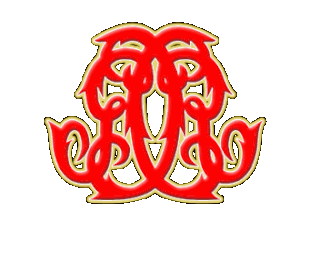 W
WThe Guides Infantry, or 2nd Battalion (Guides) The Frontier Force Regiment, is an infantry battalion of the Pakistan Army. It was raised in 1846 as part of the famous Corps of Guides.
 W
WThe Kumaon Regiment is an infantry regiment of the Indian Army. The regiment traces its origins to the 18th century and has fought in every major campaign of the British Indian Army and the Indian Army, including the two world wars, and is one of the highly decorated regiments.
 W
WMadras Engineer Group (MEG), informally known as the Madras Sappers, is an engineer group of the Corps of Engineers of the Indian Army. The Madras Sappers draw their origin from the erstwhile Madras Presidency army of the British Raj. This regiment has its HQ in Bengaluru. The Madras Sappers are the oldest of the three groups of the Corps of Engineers.
 W
WThe Multan Regiment was a regiment of the British Indian Army that saw action in the Battle of Ghazni, during the First Afghan War in 1839. The regiment was based in the city of Multan, where it was first raised. Since the independence of Pakistan in 1947, it has been part of the Pakistan Army.